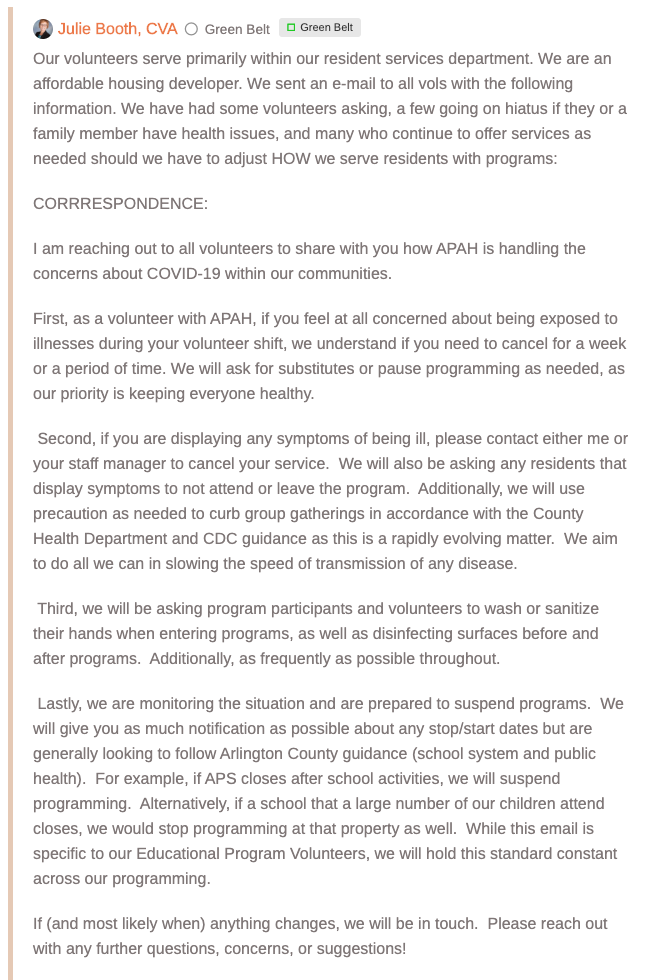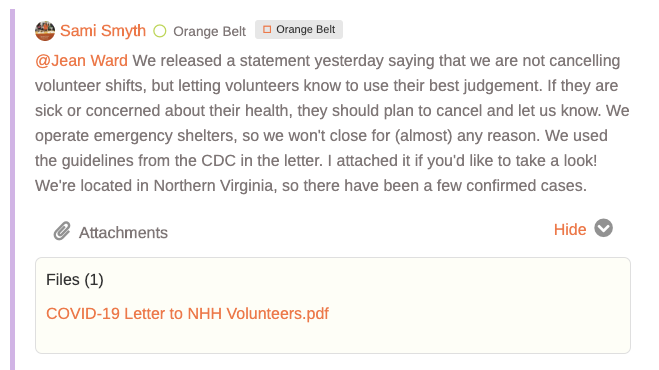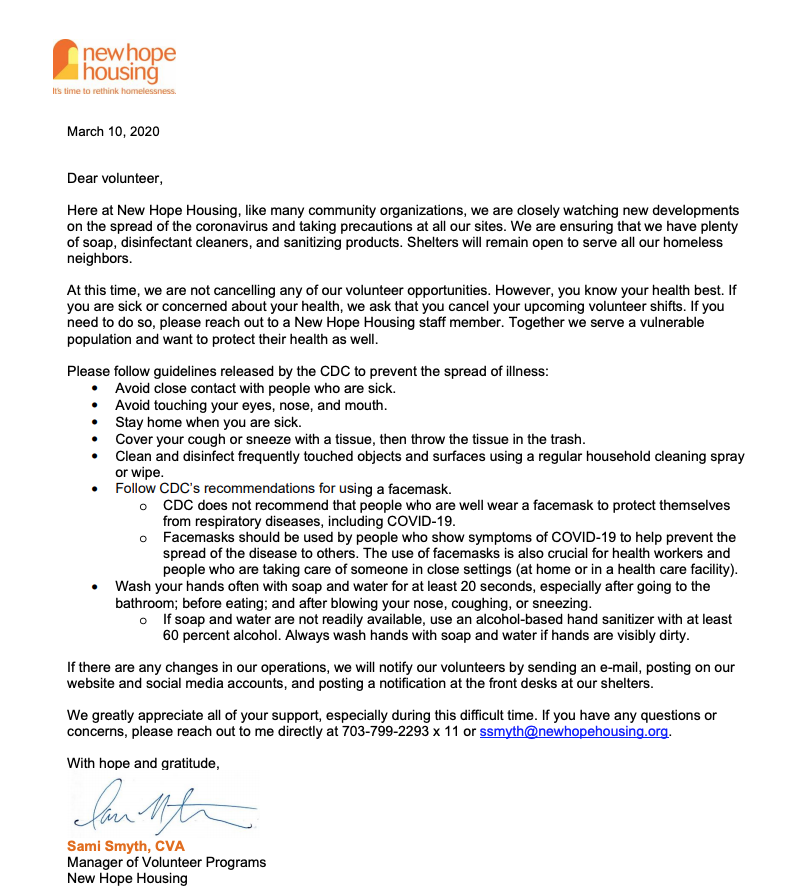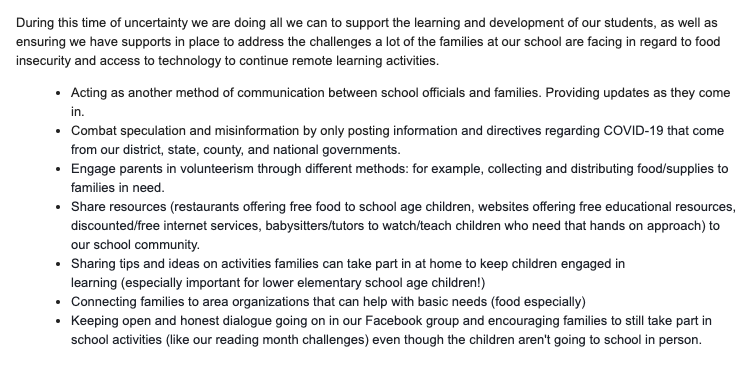 Coronavirus & Volunteers: Your Guide for Managing Uncertainty
Coronavirus & Volunteers: Your Guide for Managing Uncertainty
The global COVID-19 virus outbreak has reached pandemic proportions and has been slowly, but persistently pulling at the social structures and everyday lives of citizens around the world. The Coronavirus is impacting volunteerism, too.
My first inkling something was up was when I was planning a speaking trip to Singapore. Plans were progressing along until the virus began to spread from mainland China through Southeast Asia. Suddenly we shifted to discussing contingency plans and then cancellation and a plan to reschedule. (Note: Singapore has been praised for its handling of this and other epidemics and its private-public-community partnerships in addressing this public health concern.)
Here in the States, I’ve experienced a similar cycle of event cancellations a few times now, and it’s become clear that we simply have no idea where the outbreak is headed and when it will stop.
That’s enough to make anyone anxious.
Humans like to be in control (even when it’s an illusion). Mother nature sometimes has something else in mind altogether and, in an instant, we recognize the sheer frailty of our existence.
While we may feel at the whim of the virus, nonprofit leaders have choices in times like these that can spell either disaster or growth, connection or distance, perhaps more options than we even realize.
We can employ our influence to make things easier for our colleagues, partners, and volunteers. We can also harness the tremendous power of social capital that volunteerism catalyzes and that is latent and ready in every volunteer team.
We can engage volunteers as community educators, supporters of our organizational continuity, trusted advisors, and support networker. And, with technology, we can do this without endangering the health and safety of volunteers or those they assist.
What Volunteers Need in Times of Crisis
There is potential for the common good – right here and now – to mobilize existing volunteer teams to build connections, knowledge, and action toward stemming the tide of coronavirus transmission.
But it takes great leadership to spark a movement.
As a leader of volunteers, now more than ever volunteers need your grounded counterbalance to fear and uncertainty. In times of uncertainty, the public looks for those they feel they can trust.
You are those people.
During times of stress, stakeholders find the following three leadership traits particularly helpful and are asking these questions subconsciously to assess their presence:
- Consistency – Does the leader show up the same way they did last time? Do the messages they share represent a logical narrative? Do they align with the organization’s proclaimed values?
- Transparency – Do leaders say what they mean? Do they speak the truth, even when it’s unpopular? Do they admit mistakes, even if it’s uncomfortable?
- Predictability – In times of upheaval, this characteristic of leadership is particularly important. Is it clear where and when leaders will take action or, if more information is forthcoming, communicate the next steps? Is everyone kept in the loop about what happens next, even if it’s just an update on status?
When it comes to building and maintaining trust, and leading a following, it all comes down to communication.
If leaders keep these in mind as they plan their response to the Coronavirus crisis, they’ll do better than most.
What Volunteer Programs are Doing About the Coronavirus
About four days ago, the issue of Coronavirus and volunteers popped up in our VolunteerPro Membership Community as a topic of discussion.
The conversation started as an initial post in the Hospice and Healthcare Forum (a natural), but it quickly spread to the main forum as our members began to realize how the Coronavirus could impact and disrupt their operations.
Everyone was looking for answers for something they had never encountered before.
In the past, I’ve written about how nonprofits should prepare for emergencies and natural disasters. Some of that applies now.
But the issue becomes more nuanced when those you expect to assist in an emergency are either practicing self-quarantine or instructed to maintain social distancing, particularly if your volunteers are part of a vulnerable population group.
To offer concrete information for volunteer managers and organizations that need to make quick decisions, I’ve asked some of our community members if I could share their comments in the community. They graciously agreed.
Below are some of the ways these amazing professionals are managing the Coronavirus and their volunteer workforces, in their own words.
Julie Booth, CVA, Arlington Partnership for Affordable Housing (APAH)
Sami Smyth, New Hope Housing
Leaders of volunteers must often balance competing priorities – the needs of volunteers, the needs of the organization, and the needs of the communities they serve.
In the case of direct service programs that assist people in healthcare, hospice, or crisis centers, this becomes a heightened dilemma during an epidemic.
In many cases, organizations can’t simply shut down their facilities. And, front-line workers who rely on volunteers to supplement their work are forced to choose between having an extra pair of hands and risking disease spread to clients, co-workers, volunteers, and the families of all.
These are tough risk management decisions that every organization must make, based on their circumstance. Not easy for anyone.
Working from Home Due to Coronavirus: Volunteers & Employees
It will be up to each organization to decide when, or if, they believe volunteers and employees should telecommute to dampen the spread of the disease.
The thresholds may be different for paid staff versus unpaid volunteers. It may be driven by population group or personal preference. The final decision may even be mandated.
Regardless, both employees and volunteers can remain productive and engaged with one another and connected to the mission.
There will be plenty to do once full operations resume, so it makes sense for organizations to stay in touch with volunteers to sustain their involvement.
Telework for Volunteers
Because volunteers have a myriad of community connections, they are ideal ambassadors for amplifying the agency’s messages and updates throughout this crisis.
In addition, volunteers are often exceptional community educators that can help people stay on top of the facts.
My VolunteerPro sidekick, Valerie Mercadante is the President of her local PTA. As an unpaid volunteer leader, she has assumed the responsibility of communicating regular information to assuage fears in her membership.
As a leader, here are the proactive steps she and her team of volunteer leaders are taking …
Clearly, talented and committed volunteers needn’t be sidelined during this crisis, especially when so many technology tools for remote work exist. They can still have a powerful role to play.
Telework for Employees
If they are telecommuting, those who lead volunteers needn’t lose productivity nor their connections to volunteers either.
There are several things that healthy volunteer managers can do while they wait for the danger to pass. Here are only a few:
- Write or refresh that Volunteer Handbook or Policy Manual that’s been long overdue
- Conduct an online volunteer survey or focus group, analyze the data, and present the findings to volunteers during an online webinar or call
- Analyze the past year’s volunteer data to unearth trends that may have management implications
- Create a Volunteer Impact Report and post it on your agency’s Facebook page
- Revamp your volunteer training program, onboarding process, or volunteer leadership development plan
- Ramp up your online volunteer learning system and encourage volunteers to participate
- Develop a volunteer recruitment campaign and get ready to deploy it once you’re back in the office
- Participate in targeted online learning opportunities that can help you improve a strategy and get better results
Volunteers can be included as partners in these projects, too.
Online Tools to Beat the Coronavirus and Engage Volunteers
Keeping volunteers engaged and in the loop, even when everyone is at home, has many benefits. It will help reduce the negative impacts of social isolation, especially for volunteers who live alone.
Also, nonprofits can take proactive steps to reduce volunteer attrition by keeping in touch and maintaining momentum, even while working remotely.
Volunteers who don’t use technology can be included, too. Simple group conference calls can be set up on a regular schedule for information sharing, feedback sessions, training, and teambuilding.
Now, more than ever it’s easy to connect and share online.
As an owner of a digitally-based business, I spend about 80% of my time online. With the right tools, I feel no less connected to my customers, students, members, and team.
We really live in a miraculous time.
If your organization has not embraced technology yet, I’ve provided a few suggestions below to facilitate online collaboration. You’d be surprised how quickly folks can get into the swing of using these tools.
The following are excellent options for remote collaboration with both co-workers or volunteers:
- FreeConferenceCall: You can set up plain old-fashioned group calls using the FreeConferenceCall.com app. The system will also record the call, so you can send it to those who missed it. Make sure you master the simple mute and unmute commands and ask callers to do the same, so your calls aren’t hijacked by background noise.
- Facebook Groups: If your volunteers use this ubiquitous social media platform, you can use it to your advantage. It’s very easy to set up a private Facebook Group as a place for volunteers to connect and for you to share updates.
- Facebook Lives + B.Live: Set a regular schedule and broadcast information and inspiration. Use the live streaming app B.Live with Facebook so that you can host guests and share PowerPoint slides if you want a visual element. B.Live has a free version.
- Zoom Meetings: The only real difference between a Zoom meeting and a Zoom webinar is the registration function. The basic Zoom meeting plan is free, and you can simply email the link to join out to your team. If you have slides, you can simply screen share your PowerPoint from your desktop. Volunteers can even use the video and audio features to participate. For a smoother experience, have a plan in place for facilitating questions (e.g., have folks raise their hands or post in the chat and wait for you to unmute them).
- Google Docs or OneDrive: You can use either platform to share and collaborate on documents, spreadsheets, etc. It’s a great way to gather input quickly and maintain a single up-to-date document in one place (versus emailing multiple versions back and forth). With Google Docs, you don’t necessarily need to have a Gmail account, but you do need a Google account to access, edit, and share docs. If you have Microsoft Office 360 you may already have access to OneDrive and don’t know it. You can also sign up to use it for free. We switched from DropBox to OneDrive because the latter allows you to edit docs in live time more smoothly. You can also create folders, upload documents there, and grant access to them.
- Slack: While we don’t use Slack because we are a tiny team, it can be really helpful for organization communications on a team. By setting up specific channels, you can keep communications focused and you never have to go hunt down an old conversation in your inbox. It’s already archived in Slack.
- Airtable: We started using Airtable this past year and love it. It’s a simple, yet powerful project management tool for planning, assigning, and tracking project tasks. We set up different bases for our annual strategic plan, product launches, campaigns, and content calendar. They have a free version with the basic features. It is a fantastic way for remote teams to keep track of progress and, once you get the hang of it, it’s easy to use.
As we head toward the unknown, I’m confident that those who work in the community are some of the most equipped to handle crises like these.
You tackle complex issues on a daily basis and know how to mobilize communities.
That’s a great place to start.









